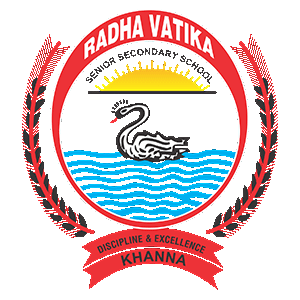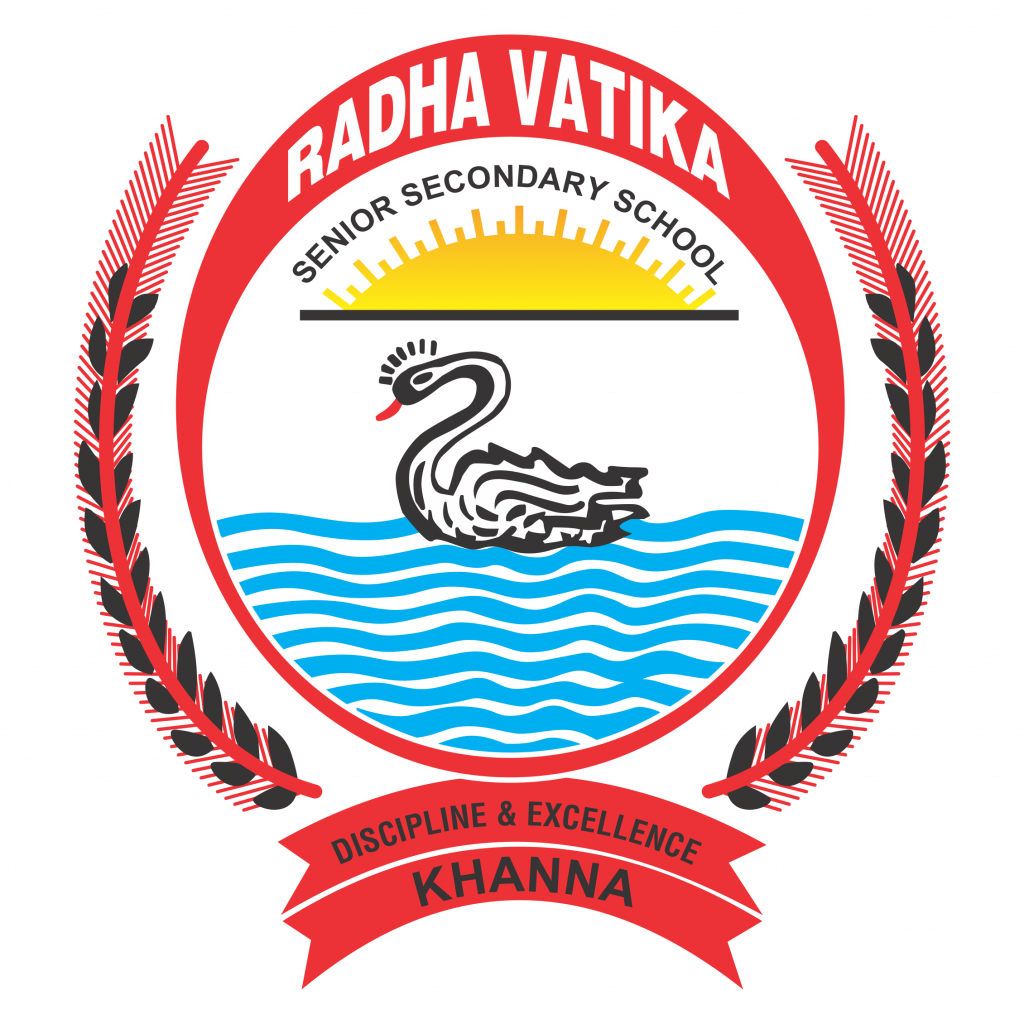Welcome To Radha Vatika
Dear Parents And Students
Welcome to the website of Radha Vatika Sen. Sec. School. This may help you to learn more about our academics curricular & Co-curricular activities . Our school offers an exceptional educational programme for students pursuing career in Science, Commerce and Humanities. Our beautiful school campus is situated at the outskirts of Khanna City, surrounded by lush green farms.
Our primary aim is not just confined to the academic excellence but all round human growth and enduring life with desired fulfillment. Our focus is for a future with a fuller human life with peace and happiness for all. We are dedicated to instilling discipline, dignity, integrity, commitment and the value of hard work in our students. We also promote cultural diversity with the result of which our students show respect and learn to face challenges of life with optimistic attitude, serenity and courage.
Dear students, always remember that student period of life is the most beautiful part of your life. There will be moments in your life where you will be exposed to a wider world. Your personal achievements and things you have learnt will be put to fire test. Be firm, hold fast to the values and principles which have become an inevitable part of your personality.
Adhere to truth, love, justice and duty. So let’s strive to achieve greater heights.
Anupama Sharma
Recent News
Recent News
The Future of Learning
The Future of Learning
The future of learning is undergoing a significant transformation, driven by the rapid advancement of emerging technologies. These technologies, including artificial intelligence, virtual and augmented reality, and blockchain, are revolutionizing the way we learn and interact with educational institutions. As we move forward, it's essential to understand the impact of these technologies on the education sector and what this means for the future of learning.
The integration of emerging technologies into education is not just about adopting new tools and platforms; it's about creating a more personalized, flexible, and effective learning experience. According to "the future of learning will be shaped by the ability to provide personalized learning experiences that cater to the individual needs and abilities of each student", says Dr. Randy Swearer, Vice President of Education at Autodesk. This shift towards personalized learning is driven by the need to prepare students for an increasingly complex and rapidly changing world.
Introduction to the Future of Learning
The future of learning is not just about technology; it's about creating a more holistic and inclusive approach to education. This includes recognizing the importance of social-emotional learning, creativity, and critical thinking in preparing students for success. As "education is not just about imparting knowledge, but about helping students develop the skills and competencies they need to thrive in a rapidly changing world", says Andreas Schleicher, Director of Education and Skills at the OECD. By focusing on these essential skills, educational institutions can help students develop the adaptability, resilience, and creativity needed to succeed in an uncertain future.
The future of learning is also about creating more flexible and accessible learning pathways. With the rise of online and blended learning, students can now access high-quality educational resources from anywhere in the world. This shift towards more flexible learning models is driven by the need to provide students with more choices and opportunities for learning, regardless of their geographical location or socio-economic background. As "the future of learning will be shaped by the ability to provide flexible and accessible learning pathways that cater to the diverse needs and abilities of each student", says Anant Agarwal, Professor of Electrical Engineering and Computer Science at MIT.

Artificial Intelligence in Education
Artificial intelligence is one of the most significant emerging technologies in education, with the potential to transform the way we learn and interact with educational institutions. AI can be used to create personalized learning experiences, adaptive assessments, and intelligent tutoring systems. According to "AI has the potential to revolutionize education by providing personalized learning experiences that cater to the individual needs and abilities of each student", says Andrew Ng, Co-Founder of Coursera. By using AI to analyze student data and learning patterns, educators can identify areas where students need extra support and provide targeted interventions to help them succeed.
AI can also be used to automate administrative tasks, freeing up educators to focus on teaching and learning. For example, AI-powered chatbots can be used to provide student support, answer frequently asked questions, and help with course enrollment. As "AI has the potential to automate many of the administrative tasks that educators currently perform, freeing up more time for teaching and learning", says Dr. Maria Palmer, Director of Education at IBM. By leveraging AI in this way, educational institutions can create more efficient and effective learning environments that support student success.
Virtual and Augmented Reality in the Classroom
Virtual and augmented reality are two emerging technologies that are transforming the way we learn and interact with educational institutions. These technologies can be used to create immersive and interactive learning experiences that simulate real-world environments and scenarios. According to "virtual and augmented reality have the potential to revolutionize education by providing immersive and interactive learning experiences that engage students and enhance learning outcomes", says Jeremy Bailenson, Professor of Communication at Stanford University. By using VR and AR to create interactive simulations and models, educators can help students develop a deeper understanding of complex concepts and principles.
For example, VR can be used to create virtual field trips that allow students to explore historical sites, museums, and other cultural institutions from around the world. AR can be used to create interactive 3D models that help students visualize complex concepts and principles in subjects like science, technology, engineering, and math (STEM). As "virtual and augmented reality have the potential to make learning more engaging, interactive, and fun, which can lead to improved learning outcomes and increased student motivation", says Dr. Chris Dede, Professor of Learning and Teaching at Harvard University. By leveraging VR and AR in this way, educational institutions can create more immersive and interactive learning environments that support student success.
The Rise of Micro-Credentials and Online Learning
The rise of micro-credentials and online learning is another significant trend in the future of learning. Micro-credentials are short, specialized courses that provide students with specific skills and knowledge in a particular area. Online learning platforms, such as MOOCs (Massive Open Online Courses), provide students with access to high-quality educational resources from anywhere in the world. According to "micro-credentials and online learning have the potential to democratize education by providing students with access to high-quality educational resources from anywhere in the world", says Daphne Koller, Co-Founder of Coursera. By providing students with more choices and opportunities for learning, micro-credentials and online learning can help increase accessibility and affordability in education.
Some of the benefits of micro-credentials and online learning include:
- Increased flexibility and accessibility
- Improved affordability and cost-effectiveness
- Enhanced student engagement and motivation
- More personalized and adaptive learning experiences
- Increased opportunities for skill development and upskilling
As "micro-credentials and online learning have the potential to provide students with more choices and opportunities for learning, which can lead to improved learning outcomes and increased student success", says Anant Agarwal, Professor of Electrical Engineering and Computer Science at MIT. By leveraging micro-credentials and online learning, educational institutions can create more flexible and accessible learning pathways that support student success.
The Impact of Blockchain on Education
Blockchain is another emerging technology that is transforming the education sector. Blockchain is a decentralized, digital ledger that can be used to securely and transparently store and verify educational records and credentials. According to "blockchain has the potential to revolutionize education by providing a secure and transparent way to store and verify educational records and credentials", says Dr. Donald Clark, CEO of Wildfire Learning. By using blockchain to create a decentralized and secure ledger, educational institutions can help prevent fraud and ensure the integrity of educational records and credentials.
Blockchain can also be used to create new models for lifelong learning, such as competency-based education and skill-based training. According to "blockchain has the potential to create new models for lifelong learning that are more flexible, accessible, and affordable", says Dr. Ryan Peters, Professor of Education at the University of California, Irvine. By leveraging blockchain in this way, educational institutions can create more innovative and effective learning pathways that support student success.
The Future of Work and the Skills Gap
The future of work is undergoing a significant transformation, driven by the rapid advancement of emerging technologies. As automation and AI continue to replace traditional jobs, there is a growing need for workers to develop new skills and competencies that are relevant to the digital economy. According to "the future of work will require workers to have a range of skills and competencies that are relevant to the digital economy, including critical thinking, creativity, and problem-solving", says Dr. Anthony Carnevale, Director of the Georgetown University Center on Education and the Workforce. By providing students with more opportunities for skill development and upskilling, educational institutions can help address the skills gap and prepare workers for success in the digital economy.
The skills gap is a significant challenge facing the education sector, with many workers lacking the skills and competencies needed to succeed in the digital economy. According to "the skills gap is a major challenge facing the education sector, with many workers lacking the skills and competencies needed to succeed in the digital economy", says Dr. Josh Bersin, Founder of Bersin by Deloitte. By leveraging emerging technologies, such as AI and blockchain, educational institutions can create more innovative and effective learning pathways that support student success and address the skills gap.
Gaming the System
As we explore the future of learning, it's interesting to note that the same principles of engagement and interactivity that make emerging technologies so effective in education are also at play in other areas of life, such as entertainment. For instance, the concept of variable rewards, which is used in AI-powered adaptive learning systems, is also used in game design to keep players engaged. Similarly, the use of immersive experiences, like virtual reality, can be seen in various forms of entertainment, including online games, where players can experience new worlds and challenges, like those found at Wild Bandolier slot demo (Play’n GO), which offers a unique and thrilling experience. By understanding how these principles work in different contexts, we can gain a deeper appreciation for the complexities of human motivation and behavior, and develop more effective strategies for promoting learning and engagement.
Conclusion
The future of learning is undergoing a significant transformation, driven by the rapid advancement of emerging technologies. As we move forward, it's essential to understand the impact of these technologies on the education sector and what this means for the future of learning. By leveraging emerging technologies, such as AI, VR, AR, and blockchain, educational institutions can create more personalized, flexible, and effective learning experiences that support student success. As "the future of learning will be shaped by the ability to provide personalized, flexible, and effective learning experiences that cater to the individual needs and abilities of each student", says Dr. Randy Swearer, Vice President of Education at Autodesk. By working together, we can create a more innovative and effective education system that prepares students for success in the digital economy.

Sparsh Batta
89.4%

Bhavya Garg
94.8%

Mansi Verma
94 %




